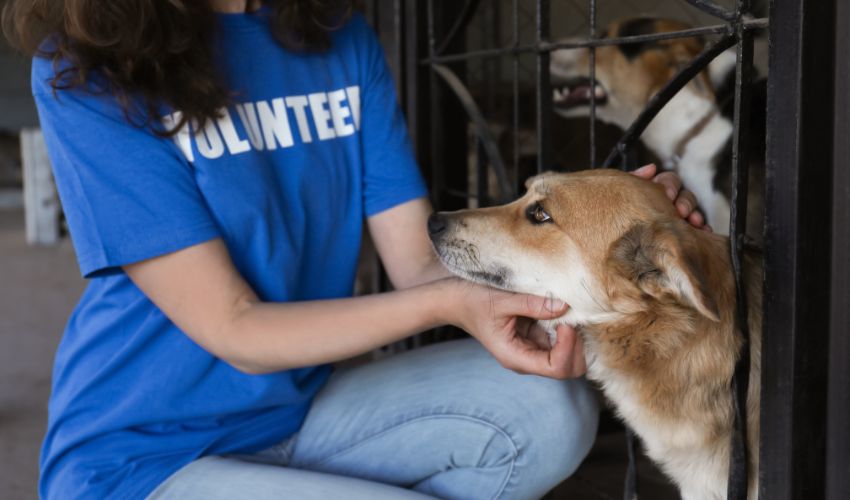Emergencies happen. A family falls ill, a natural disaster strikes, or a sudden relocation leaves pets without a home—and suddenly, your rescue or shelter is on the frontlines. For many organizations, these situations expose a gap in traditional foster programs: they simply weren’t built for real-time crises.
That’s where a Crisis Boarding Program steps in—a solution designed to help rescues act quickly, place pets safely, and keep operations running smoothly.
Understanding Traditional Foster Programs
Traditional foster programs have been the backbone of rescue work for decades. Volunteers open their homes to pets, providing temporary care until a permanent placement or adoption can be arranged. These programs are invaluable for:
-
Reducing overcrowding in shelters
-
Providing socialization and care in a home environment
-
Connecting volunteers to pets in need
However, traditional foster programs often have limitations:
-
Availability depends on volunteer schedules – emergencies don’t wait.
-
Placement decisions can be slow – manual coordination can delay urgent care.
-
Tracking and communication challenges – keeping every foster updated can become overwhelming.
What Makes a Crisis Boarding Program Different?
A Crisis Boarding Program is designed specifically to address urgent pet care needs. Unlike traditional fosters, it focuses on speed, reliability, and coordination. Key features include:
-
Rapid identification of pets in need – quickly determine which animals require immediate boarding.
-
Seamless placement into caring homes – match pets with verified, qualified foster or boarding providers instantly.
-
Integration with existing systems – works alongside your foster management program or as a standalone solution.
-
Enhanced support for pet parents – provides peace of mind, knowing their pets are safe during emergencies.
This proactive approach ensures no pet is left behind during crises, while also easing the administrative burden on shelters and rescues.
Scenario 1: The Last-Minute Family Emergency
Imagine this: A pet parent calls your rescue in a panic. They’ve been hospitalized unexpectedly, and their dog or cat has nowhere to go. Your shelter is already at capacity.
Traditional foster programs might help—but only if a volunteer is immediately available, willing, and able to take in the pet. In the meantime, the animal might end up stressed in a crowded shelter, or worse, the family feels guilty for needing help.
With a Crisis Boarding Program, your team can:
-
Quickly identify available crisis boarders in your network
-
Place the pet in a caring home within hours
-
Keep the family updated, easing their stress and building trust
This isn’t just convenience—it’s saving lives and supporting pet parents in their most vulnerable moments.
Scenario 2: Disaster Strikes
Floods, wildfires, or other natural disasters can force evacuations at a moment’s notice. Shelters often struggle to coordinate emergency placements while managing the chaos of incoming animals.
Traditional foster programs rely on volunteers juggling multiple commitments. What happens if no one can step in immediately?
A Crisis Boarding Program provides a ready-made network:
-
Verified homes and boarding spaces that can accommodate pets on short notice
-
Automated coordination so your staff doesn’t have to spend hours calling every foster
-
Peace of mind that pets won’t be left behind, even in a crisis
Suddenly, your shelter isn’t scrambling—it’s leading a structured, lifesaving response.
Scenario 3: The Overbooked Foster Program
Many rescues know this feeling: your foster homes are full, but a new case comes in—maybe a senior dog abandoned by their family or a litter of kittens found in an unsafe area.
With limited volunteer availability, traditional foster programs can leave pets waiting. Each delay increases stress for the animal and pressure on your staff.
A Crisis Boarding Program changes the game:
-
Flexible placements for pets, even when traditional fosters are at capacity
-
Integration with your existing foster management system, so you see everything in one place
-
Ability to manage overflow without chaos, ensuring every pet has a safe, temporary home
Why Shelters and Rescues Need a Crisis Boarding Program
After reading these scenarios, it’s clear: traditional foster programs are invaluable—but they weren’t built for emergencies. A Crisis Boarding Program gives rescues the tools to:
-
Respond instantly to unexpected emergencies
-
Reduce the stress on staff and volunteers
-
Prioritize pet welfare without overloading your existing systems
-
Support pet parents in ways that build trust and long-term loyalty
Real-Life Impact: What This Looks Like in Action
-
A single volunteer network placement helped a rescue place 15 pets in 24 hours during a local flooding emergency.
-
Families facing sudden hospitalization reported feeling relieved and supported, knowing their pets were cared for.
-
Shelters integrated crisis boarding with foster management, reducing phone calls and emails by 70% and freeing staff to focus on daily operations.
If these examples sound familiar, it’s because these are the exact challenges your organization likely faces—and the solution is ready for you.
Take Action: Protect Pets and Streamline Your Rescue Today
Stop scrambling and start responding with confidence. A Crisis Boarding Program empowers your shelter or rescue to act fast, place pets safely, and support families in moments that matter most.











